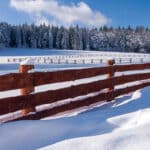When one begins to think about investing in an asset they usually have a couple of goals in mind. First, they are usually hoping that their investment will increase in value. Second they are trying to protect their future ability to utilize the asset. Relating this to land…When someone buys a parcel of land, they hope that the parcel of land will increase in value and they have protected themselves by investing in a tangible, usable asset. This is a lesson that wealthy families, families that have wealth generation after generation, have known for quite sometime. It seems simple, but few actually put it in practice. Land is much prefered to carry wealth over from one generation to the next. Most of the wars that have been fought in the world have been for control of land in some fashion. Land is the essence of what God used to make us and what sustains us.
Genesis 2, 7-9
And the Lord God formed man of the dust of the ground, and breathed into his nostrils the breath of life; and man became a living soul. And the Lord God planted a garden eastward in Eden; and there he put the man whom he had formed. And out of the ground made the Lord God to grow every tree that is pleasant to the sight, and good for food; the tree of life also in the midst of the garden, and the tree of knowledge of good and evil.
A little more knowledge about the mechanics of why people who invest in land tend to be wealthier over time…
Land is a very effective hedge. A hedge is something that protects something of value. In the case of land investing, it hedges against loss of purchasing power. When one has gathered purchasing power, they tend to want to keep that power, and investing in land gives them a vehicle to do just that. Investments in commodity-producing land, land that is only valued for it’s ability to produce a commodity, generally does that. It protects the real value of the purchasing power that it takes to own the land. Real value is the purchasing power that owning an asset gives its owner. Land generally does this while producing income from the production of the commodity. As a society, we tend to think of our purchasing power in monetary units…dollars, euros, yen… Monetary units are not purchasing power. These units simply represent the purchasing power that an asset currently has. This is the nominal value. The value of an asset expressed in a monetary unit. Hedges protect real value. Effective hedges, such has land, protect purchasing power against inflation and deflation.
Wikipedia – Real versus nominal value – en.wikipedia.org/wiki/Real_versus_nominal_value_(economics)
For example…
In 1975 Mr. Brown had $12,000. This $12,000 represented enough purchasing power for him to buy a new car for his wife, a new pickup for him, a new tractor for the farm, and a small fishing boat, or he could buy 60 Acres of Timberland in Clay County, Alabama that was for sale and joined US Forest Service owned land in the Talladega National Forest. Mr. Brown had to decide which to spend his money on. Mr. Brown was still young, just 30 years old, but he knew he needed to be thinking about financial security for him and his young family. He decided to buy the 60 Acres of timber land and forego buying any of the other things for the time being. He really wanted the new car and the new pickup, but the ones they had were paid for and still in good working order. He did not really need the fishing boat and he could get by with the tractor his dad had given him several years before. The 60 Acres of timberland had just been cut about one year previous, and the seller was willing to have the trees replanted. The land had frontage on a county dirt road, and was well away from any houses. He reasoned that he could use the property to teach his children to enjoy the outdoors…maybe hunt the land, and fish the pond that he thought he might build on it some day. He negotiated with the seller, and walked away from closing with a property that was newly planted in pine trees, and $1,000 left over to build that pond he was thinking of. There was a nice little stream on the back of the property that was situated just right for a small dam and a small 1 acre pond. 10 years pass. In that time, Mr. Brown and his son have hunted on the property every year. His daugther grew to absolutely love fishing in that pond. Mr. Brown’s wife liked that he was no longer spending money to be a part of that hunting club anymore too. It was valuable time that Mr. Brown was able to spend with his children there. Much more valuable than any of the things he could have bought with the $12,000. In that 10 years the trees had gotten much larger. It would soon be time to thin the stand to reap a little of the benefits of timberland ownership. He waited another year for the pulp market to reach a peak and then sold 1/3 of the timber on the 60 acres. He sold the timber for enough to finally buy that new tractor he had wanted. Another 10 years go by…its now 1995. Both of Mr. Brown’s children are now in college. His son took a nice 8-point buck on the property when he was 16 and his daughter still loves spending time with her dad down by the pond at the ”old woods place”. Mr. Brown knows that it’s time to cut the timber and start the process over again, and he sure could use the money to help fund college expenses. He sells the timber, except for 5 acres around the pond, and gets enough to pay for his childrens college tuition. He has to scrape together a little money to replant the timber, but he looks back and figures it is a good investment to do so. A few years later, Mr. Brown gets a call from a local real estate agent. The agent tells him that he has someone looking to spend about $100,000 to buy a hunting / timber property. Mr. Brown’s seemed to fit what the buyer was looking for. Mr. Brown told the agent he wanted to think about it for a day or two, and get back with him. Mr. Brown went down to the place and looked at his young, growing investments. He looked at the pond, and the small field where his son missed his first deer. Then he though about what that $100,000 would buy him…the purchasing power that owning that land gave him. He reasoned that for $100,000 he could buy a new car for his wife, a new pickup for him, a new tractor so that he could give his to his son, and a fairly nice fishing boat. On his way back home, he thought about what other things that investment had provided him with through the years. Money for that now aging tractor, money for his children’s college education, time spent with his family that no amount of money could buy. And he reasoned that he had gotten all of that and the land was still worth, in real value, about the same amount since he could still buy the same things with that purchasing power. So he promptly called the agent back when he got home, and told him that there was no way that $100,000 would ever come close to the true value of the property. He went on to say that he was going to keep the property to give it to his children, so that they could reap the benefits of it’s true value.
Mr. Brown took $12,000 dollars in 1975, that would have bought many things for him and invested it in land. He reaped both economic and non-economic values from the investment during his ownership of the investment, and still had the same amount of purchasing power 25 years later. This is not a far-fetched example. This does happen. Land was an effective hedge for Mr. Brown. It protected his purchasing power, the real value. He learned that the nominal value of $12,000 in 1975 was about the same in terms of real value as $100,000 was in 2000. He learned that the true value could not be expressed in 1975 dollars or in 2000 dollars. He did all of this while being a good steward of what God created and of what sustains him.
This content may not be used or reproduced in any manner whatsoever, in part or in whole, without written permission of LANDTHINK. Use of this content without permission is a violation of federal copyright law. The articles, posts, comments, opinions and information provided by LANDTHINK are for informational and research purposes only and DOES NOT substitute or coincide with the advice of an attorney, accountant, real estate broker or any other licensed real estate professional. LANDTHINK strongly advises visitors and readers to seek their own professional guidance and advice related to buying, investing in or selling real estate.







Robert, great to see someone giving God some credit! Wish you were a SC land man. Dave
Hello Robert,
You did a good job showing what a great investment land has always been & always will be. I wish I had known that when I was 30 years old. I am a Realtor with Mossy Oak Properties & specialize in land. I try to promote this idea all the time with my buyers, especially in the current market. Thank you.
Beth McLellan
Kosciusko, MS
Thanks for the comments. Land is one of the few truly stable investments.